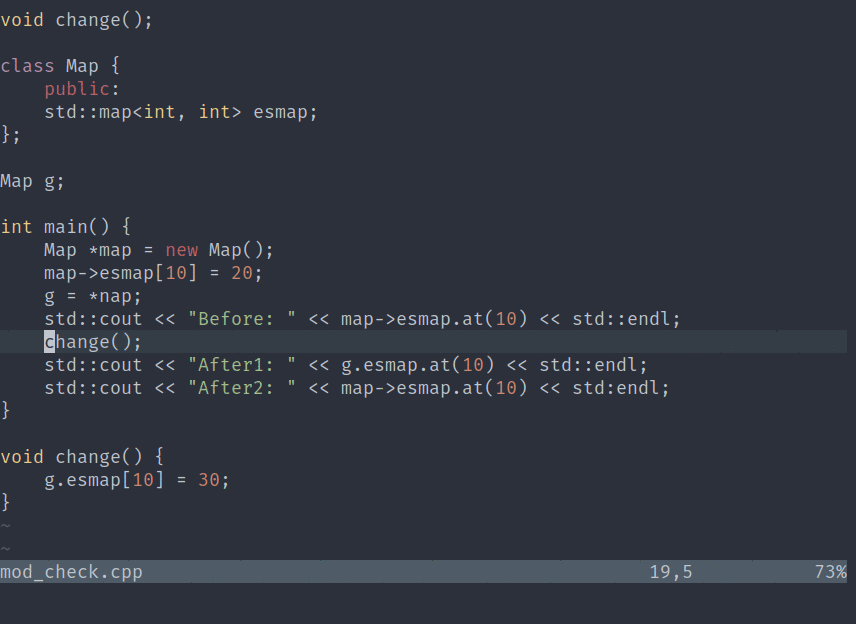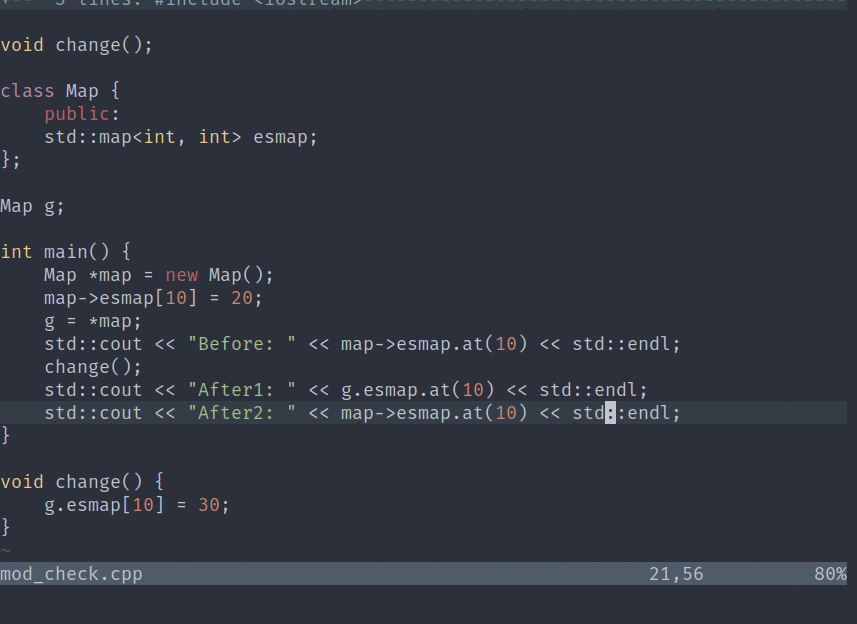AsyncMake is a minimal plugin to utilize the jobs facility introduced in Vim 8, and run shell commands asynchronously from inside Vim. It has been tweaked specifically to build projects and list out errors, if any.
- No intrusion to the Vim workflow; works in tandem with quickfix windows and the
errorformat(details below). - Supports on-demand as well as background builds.
- Falls back to synchronous builds for older Vim versions.
AsyncMake tries to be as less intrusive as possible with respect to the default settings. It can be used in two ways -- (a) on-demand; and (b) behind-the-scenes.
AsyncMake provides a simple command (called, guess what, AsyncMake) to run shell commands asynchronously, which can be invoked as follows:
:AsyncMake [cmd]For example, to compile the current C++ file, use:
:AsyncMake g++ %Or to compile a certain file main.cpp:
:AsyncMake g++ main.cppThere is also a variable b:asyncmakeprg, which could be used to define the default command [cmd] for a buffer.
For example, if you wish to always compile the cpp file in the current buffer using g++, add the following line to ~/.vim/after/ftplugin/c.vim:
let b:asyncmakeprg = "g++ %"Next, from a cpp file, type :AsyncMake and press Enter.
Immediately, you would get a Running: [cmd] message (it will disappear once the command finishes execution).
If the compilation was successful, you will get a message No errors!.
If the compilation failed with some errors, the errors are loaded into the quickfix list, which is opened automatically.
The errors are formatted based on the errorformat option for the corresponding compiler. See :help errorformats to learn about defining it based on your tastes.
The default value of b:asyncmakeprg is make, which essentially would use a Makefile (if one exists) in the current directory.
Press Enter over an error to jump to it; navigate to the next and previous errors using :cnext and :cprevious, respectively.
I recommend the following convenience mappings:
nnoremap ]q :cnext<CR>
nnoremap [q :cprevious<CR>You can close the quickfix window using :cclose; it will also be closed automatically if you run AsyncMake again and there are no errors.
See :help quickfix to learn more about working with quickfix windows.
If your Vim version is below 8 (check using :version), the 'Make' part of AsyncMake still works like above; however, the builds will be synchronous, that is, you would see the compilation happening as you would normally do by running the command with a bang: :!cmd.
AsyncMake can also be tweaked to run silently.
Just append a bang (!): AsyncMake!.
In this mode, AsyncMake will run the specified command (either as an argument or the value of b:asyncmakeprg) in the background.
You can view the errors anytime by opening the quickfix window (:copen).
You can also run a behind-the-scene build automatically when you save a buffer.
To enable automatic behind-the-scene builds use the command :AsyncMakeMonitor, and to disable them use :AsyncMakeMonitor!.
To make behind-the-scene builds more useful, AsyncMake provides a statusline extension. You can use it as follows:
set statusline+=%#WarningMsg#%{exists('g:loaded_asyncmake')?asyncmake#statusline():''}%*This function will notify you with the number of errors on your statusline (noticed the red-color number within square brackets when there were errors in the above gifs?).
Note that you need :set laststatus=2 to always have the statusline visible.
Use your favorite plugin-manager, or install manually. Refer this article for general help on managing plugins in Vim.
Star this repository on GitHub if you like the plugin. Use the issue-tracker for complaints and feature-requests.

